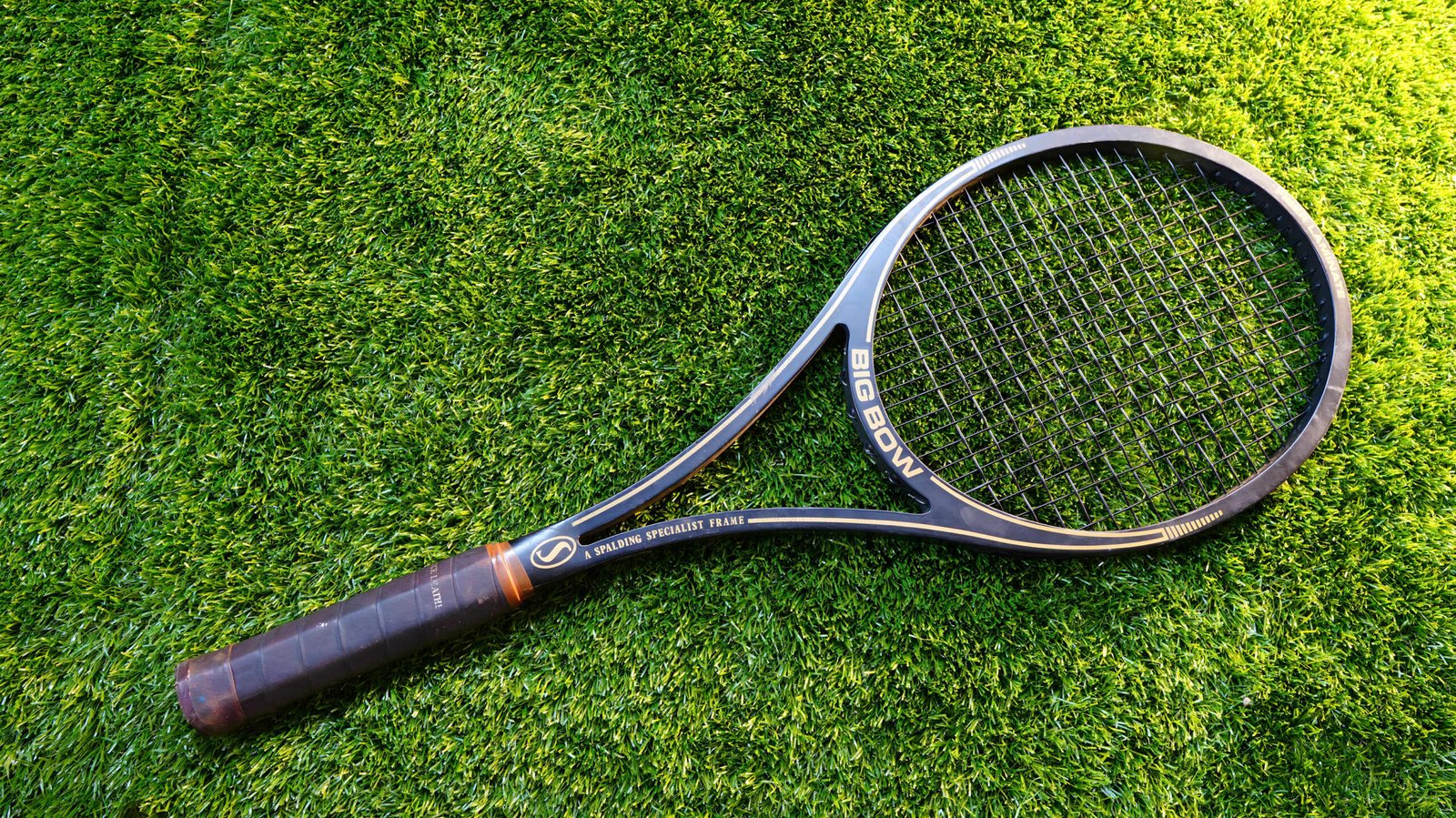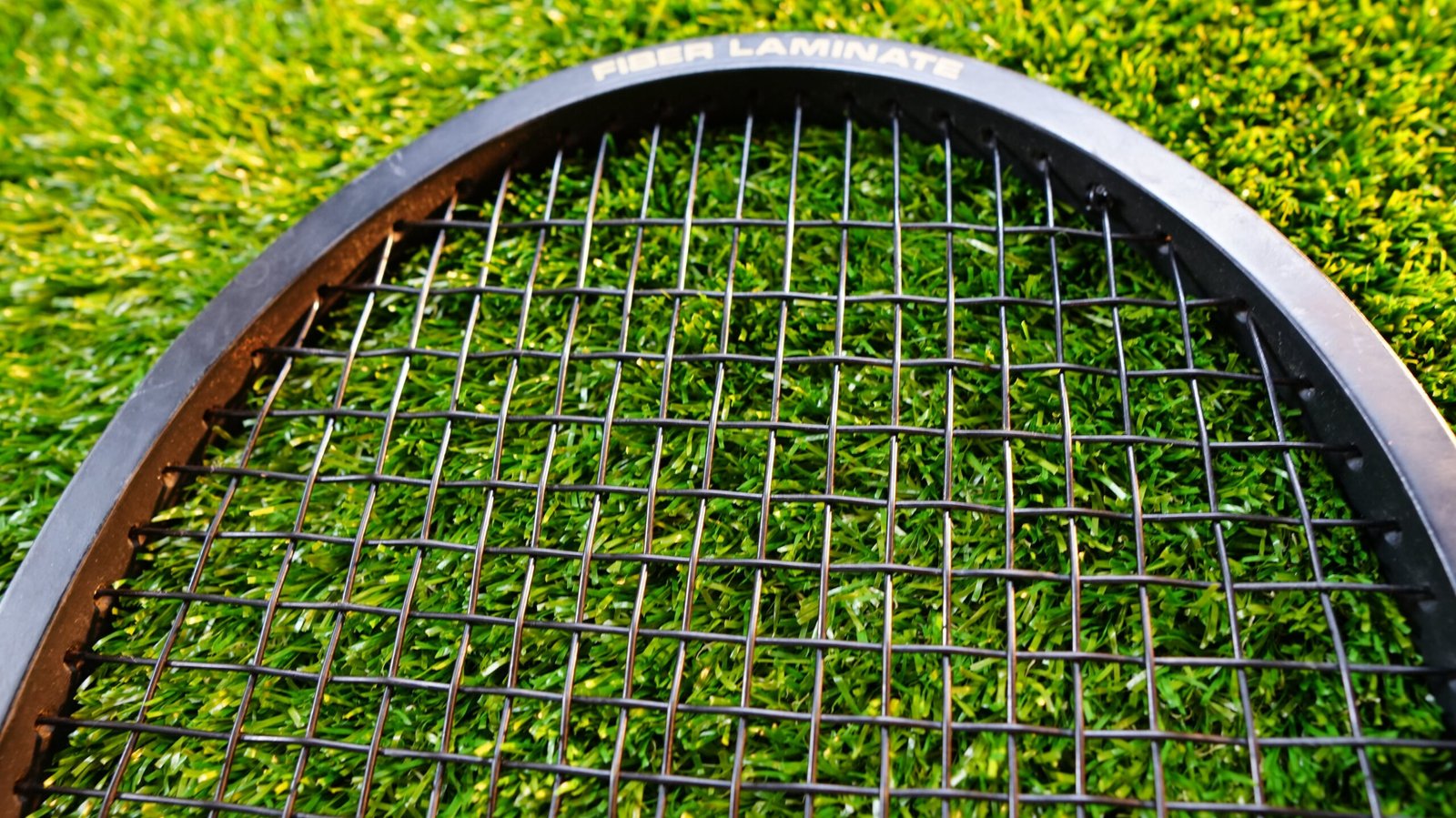Condition
9
10: New
9: Mint
8: Excellent
7: Good
6: Fair
5: Average
4: Below Average
3: Poor
|
Rarity
9
10: Impossibly rare
9: Extremely rare
8: Hard to find
7: Fairly rare
6: Uncommon
5: Common
<4: Big Seller
9: Mint
8: Excellent
7: Good
6: Fair
5: Average
4: Below Average
3: Poor
9: Extremely rare
8: Hard to find
7: Fairly rare
6: Uncommon
5: Common
<4: Big Seller
– – – – – – – – – – –
About This Racket
The Spalding Big Bow is the sister racket to Snauwaert La Grande. The Big Bow has a slightly larger head. Big racket producer Snauweart was a major supplier for Spalding and eventually was purchased by Spalding around 1968. In its heyday Snauwaert produced up to 800.000 tennis rackets per year.
Spalding were making the iconice Speed Shaft in Japan so when Spalding bought Snauweart / Depla , they moved production to Snauweart Belgium and produced the speed shaft there. The Big Bow also started in Japan and was moved to Belgium. The Japanese version has hard Beechwood in the laminations and is considered better than the French Ash Belgium models.
Spalding’s Athletes included:
Bill Tilden
Darlene Hard
Pancho Gonzales
Tracy Austin
Historic Gallery
Specifications (👋 not yet accurate….check back soon)
| Measurements | Value | Performance | Score |
|---|---|---|---|
| Weight | 394g | Power | 33/100 |
| Head Size & Length | 68sq in | 27inch | Control | 28/100 |
| Balance | 8pt head light (220) | Spin | 26/100 |
| Grip | Perforated leather | Handling | 30/100 |
| Strings | 18 x 20 | gut | Comfort | 49/100 |
| Flexibility | RA 49 | Consistency | 33/100 |
About Spalding
Albert Goodwill Spalding’s journey began as a dominant pitcher for the Boston Red Stockings in 1871, where he exclusively pitched with a baseball he developed himself. By 1876, Spalding expanded from the field to business, opening the first A.G. Spalding & Brothers sporting goods store in Chicago. This year also marked the creation of the first Major League Baseball, which became the official ball of the National League and later the American League.In 1877, Spalding revolutionized baseball equipment by creating the first baseball glove, which transitioned the sport from bare hands to protective wear. In 1887, Spalding introduced the first American football, ensuring high standards of material and workmanship. By 1894, at the request of Dr. James Naismith, Spalding developed the first basketball, followed by the creation of the first American volleyball in 1895. By 1900, Spalding was the largest manufacturer of baseball bats in the U.S., producing over a million bats annually.While the business was rooted in baseball, Spalding expanded into various sports, including tennis. Spalding sold the famous “Slocum Tennis Racket,” named after Henry Slocum, the second US singles champion in 1888/1889, which was made in Belgium. Recognizing the growing popularity of tennis and golf in Australia and the protective trade tariff conditions, Spalding opened their fifth global plant in Sunshine, Melbourne, in 1925. This plant was dedicated to manufacturing tennis racquets, tennis balls, and golf balls. The tennis balls produced were the new two-piece plugless and stitchless type invented by Spalding.One of the first employees and Victorian Sales Manager for the Sunshine plant was Gerald Patterson, a famous Australian player known for his Wimbledon wins in 1919 and 1922, the Australian Championship in 1927, and numerous Davis Cup teams. Tennis racquets were imported from the USA in a rough state and shaped to various designs using special machinery, with Queensland maple and cedar woods used for the handles. The first year’s projection was to produce 40,000 racquets, with key 1926 brands including Kro-Bat, Gold Medal OS, Gold Medal HIC, Vantage, Greenwood, Crescent, and local Sunshine models.By 1927, the famous Top Flite split throat racquet made an appearance, and Spalding’s global marketing efforts meant racquets produced in the USA resembled those made locally. In 1929, models included the Davis-Cup-De-Luxe, and by 1930, the Peerless and Endura were introduced. Spalding acquired Alexander Tennis Racquets between 1957 and 1961, integrating their machinery into the Sunshine plant and continuing the ‘Cressy’ name with a Spalding model.In subsequent years, Margaret Court won her first Wimbledon with a Spalding Gonzales model, and the company saw success with the aluminium racquet called the Smasher in the mid-1970s. Despite facing challenges from growing Asian manufacturing, Spalding maintained its reputation for quality and innovation in sporting goods.
Gallery
Timeline of Spalding
uested:
| YEAR | EVENT |
|---|---|
| 1871 | Albert Goodwill Spalding began his baseball career with Boston Red Stockings. |
| 1876 | A.G. Spalding & Brothers sporting goods store opened in Chicago. |
| 1877 | Spalding created the first baseball glove. |
| 1878 | Spalding published the first “Official Rules Guide for Baseball.” |
| 1882 | Spalding retired to become president of Chicago White Stockings. |
| 1887 | Spalding created the first American football. |
| 1894 | Spalding developed the world’s first basketball. |
| 1895 | Spalding developed and manufactured the first American volleyball. |
| 1900 | Spalding became the largest manufacturer of baseball bats in the U.S. |
| 1930 | Spalding developed the first liquid center golf ball, the Kros-Flite. |
| 1968 | Spalding developed the first 2-piece performance golf ball, the Spalding Executive. |
| 1983 | Spalding Basketball selected as the Official Ball of NBA. |
| 1992 | First composite leather basketball created. |
| 1997 | Official basketball of the WNBA. |
| 2001 | Spalding introduces first basketball with built-in Micro Pump. |
| 2002 | Official soccer ball of the Major Indoor Soccer League. |
| 2003 | Official basketball of the Rucker League and Big Ten tournaments. |
| 2004 | Spalding becomes the official ball of the Arena Football League |








